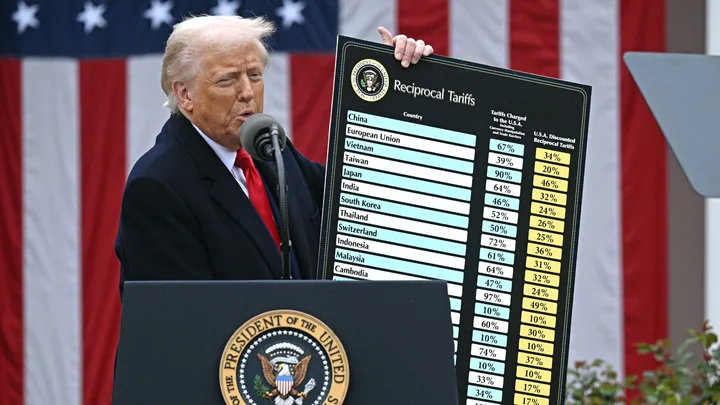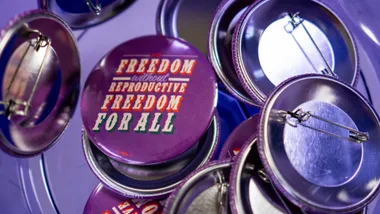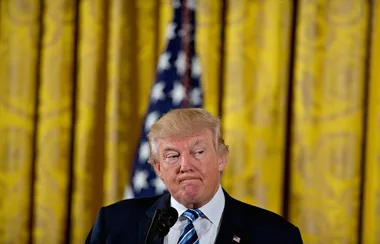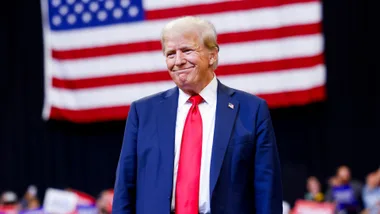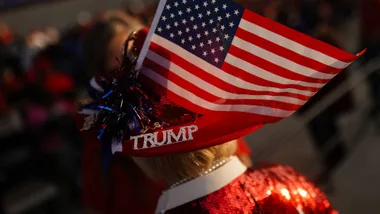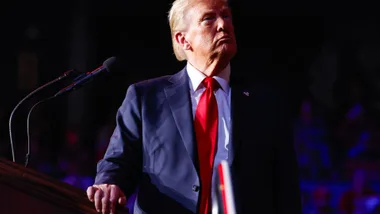As the world has well and truly sobered up from the onslaught of the US election, a case of the post-campaign scaries seems to be still washing over America, as citizens and voters grapple with the reality of another Trump term. And as easy as it is to distance another country’s political challenges from our own, there’s often a lot more at stake from any new presidency, than many realise – not least in relation to the proposed Trump tariffs.
Coming straight out the gate promises of sweeping economic reforms immediately after he was elected, US President Donald Trump hasn’t been shy in revealing elements of his fiscal agenda, which is largely based around lowering corporate taxes and raising tariffs.
Now, he’s delivered on his promise by announcing a range of tariffs as part of what he’s labelled “Liberation Day”.
So what do these new policies mean and how might they actually impact Australia, you ask? That’s a a good question, so let’s start with the basics.
What Is A Tariff?
Simply put, a tariff is a tax on goods that come into, or leave, a country.
Tariffs can be applied based on country of origin/destination, or particular items. Taxes on goods are imposed to raise money or protect local industry, but they can also be used as a political tool to apply pressure on another nation.
Let’s use a hypothetical situation relating to a US-based clothing company, as an example. Say a brand imports its goods – in this case, t-shirts – from China into the US, under Trump’s proposed tariff hike, the American clothing company will now pay a 60 per cent tax on the value of that import. So, if a t-shirt costs $10 to import from China, the US company would have to pay $6 per t-shirt to the US Government.
Sounds simple right? But here’s where it gets sticky.
If companies are now having to pay 60 per cent tariffs, then they’re hardly going to just accept the loss. Instead, the more likely scenario will see companies increase the cost to the consumer, as a way to recoup or mitigate the significant knock to profits.
Trump’s strategy behind this is two-fold. On one hand, the proposed tariffs will be instated as a deterrent to companies importing from China therefor creating an incentive to manufacture in America. Very simplistically, more local manufacturing equates to more jobs for Americans.
But in deterring US companies from importing goods from China, the tariffs can also be seen as be a tactic to weaken the Chinese economy. And this is where experts argue, that Australia could be hit the hardest.
What Are The New Trump Tariffs?

President Donald Trump has been vocal about blaming the global trading system for a laundry list of local woes – including job cuts, closed off foreign markets and inflation. The answer to all of which, according to Trump, remains closely, if not solely, linked to tariffs.
Trump’s latest “liberation day” announcement involves ‘sweeping’ or ‘across-the-board’ tariffs on all imports to the US from around the world. The tariffs imposed on April 2 range from 10 per cent to 49 per cent on all goods imported from oversees, with an additional 25 per cent tariff on specific categories such as foreign automotive companies.
“For decades, our country has been looted, pillaged, raped and plundered by nations near and far, both friend and foe alike,” Trump said during his address.
So What Do The Trump Tariffs Mean For Australia?

When the proposed tariffs were first announced in December 2024, economic experts were quick to point out the need to act swiftly to avoid the full brunt of reforms. At the time, Richard Holden, Professor of Economics at UNSW Business School, spoke about the importance, stating: “If Trump goes ahead with across-the-board tariffs or very significant tariffs on China, that could easily usher in retaliatory tariffs and an era of deglobalisation – and that would be very bad for the US economy, for the global economy, and for Australia in particular.”
In the same respect, said Professor Holden, reactionary measures could also be expected from China. “China might do the same thing and say, ‘Well, if the US is going to impose big tariffs on Australia, which is a military and security ally of the US, then we’ll have big tariffs on Australia.’ That would be really bad for all of our exports.”
So does the latest announcement line up with market predictions? “Overall it looks worse than markets expected with 10 per cent on all countries and much higher rates on many,” noted AMP economist Shane Oliver.
“For Australia, the 10 per cent tariff is bad news for the industries affected. Pharmaceuticals (worth $2bn a year) are not currently included but look likely to see their own tariff down the track.”
Our local beef trade has also been targeted under the new regime, with Trump stating: “Australia bans – and they’re wonderful people and wonderful everything – but they ban American beef.
“Yet we imported US$3 billion of Australian beef from them just last year alone.
“They won’t take any of our beef. They don’t want it because they don’t want it to affect their farmers and you know, I don’t blame them but we’re doing the same thing right now starting at midnight tonight, I would say.”
The Prime Minister responded to Trump’s comments with a measure of his own, reinstating the country’s commitment to its current ban on the import of US beef.
We have made it very clear to the United States that we will not compromise on biosecurity,” he said.
“We will not weaken the measures that protect our farmers and producers from the risks of disease or contamination.”
How Did Australia Respond?
In the wake of today’s announcement, Prime Minister Anthony Albanese said the tariffs are “not unexpected, but let me be clear, they are totally unwarranted”, adding they were “not the act of a friend”.
While he maintained Australia would refrain from imposing reciprocal tariffs on the US, he also stated, “The administration’s tariffs have no basis in logic and they go against the basis of our two nations’ partnership. This is not the act of a friend. Today’s decision will add to uncertainty in the global economy and it will push up costs for American households. It is the American people who will pay the biggest price for these unjustified tariffs.
“This is why our government will not be seeking to impose reciprocal tariffs,” he continued. “We will not join a race to the bottom that leads to higher prices and slower growth. We will stand up for Australia. We will continue to make the strongest case for these unjustified tariffs to be removed from our exporters.”
Further cementing the Australian line in the sand, Albanese reaffirmed the government’s stance by ensuring the alliance remains steadfast, whatever the projected outcome.
“Our shared history, our friendship, our alliance, these are all bigger than a poor decision. But the Australian people have every right to view this action by the Trump administration as undermining our free and fair trading relationship and contrary to the shared values that have always been at the heart of our two nations’ longstanding friendship.”
READ NEXT:
What Does A Trump Win Mean For Australians?
Donald Trump Is The Winner Of The US Election
What Does The Trump Win Mean For Women’s Productive Rights?
